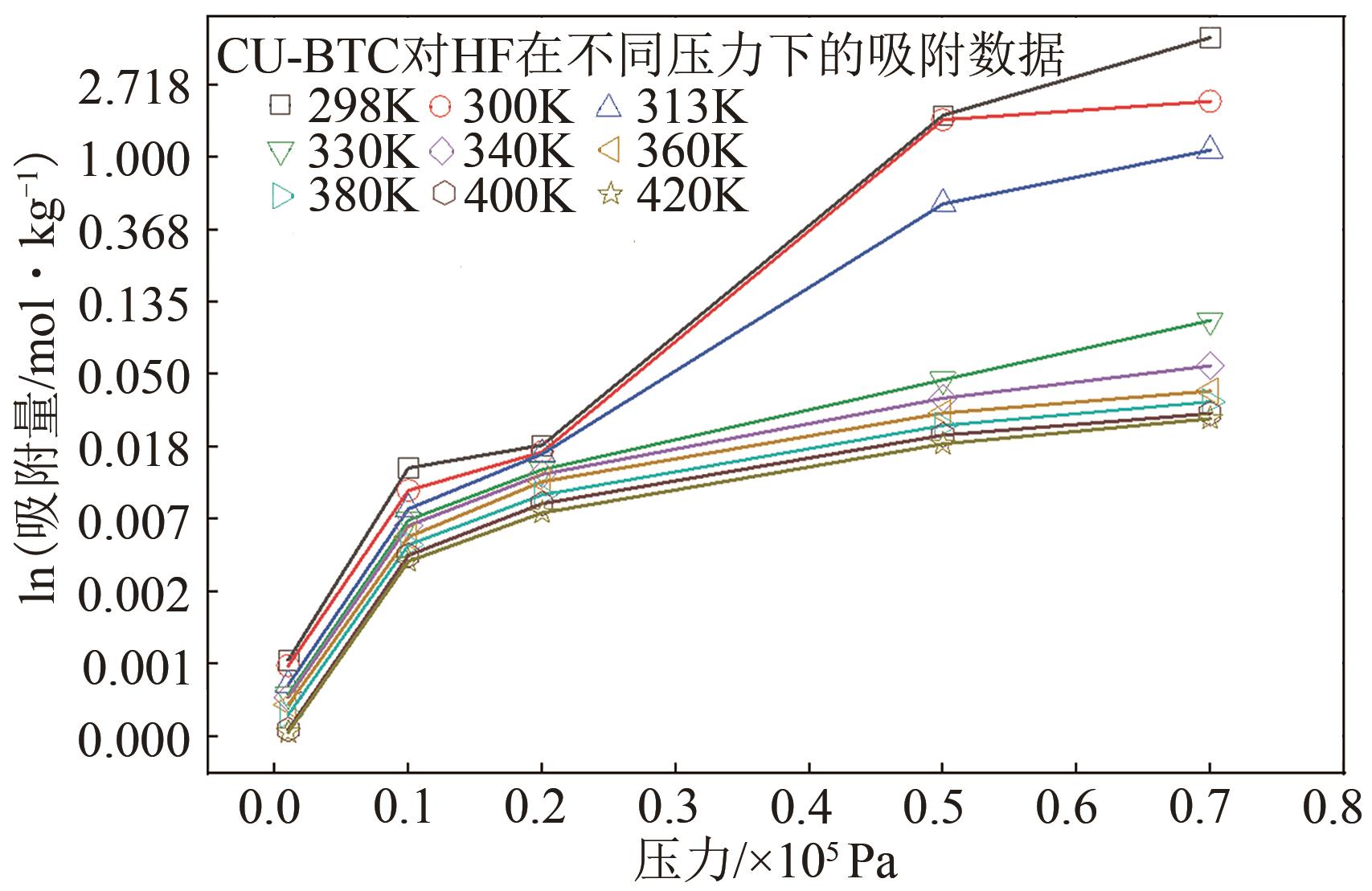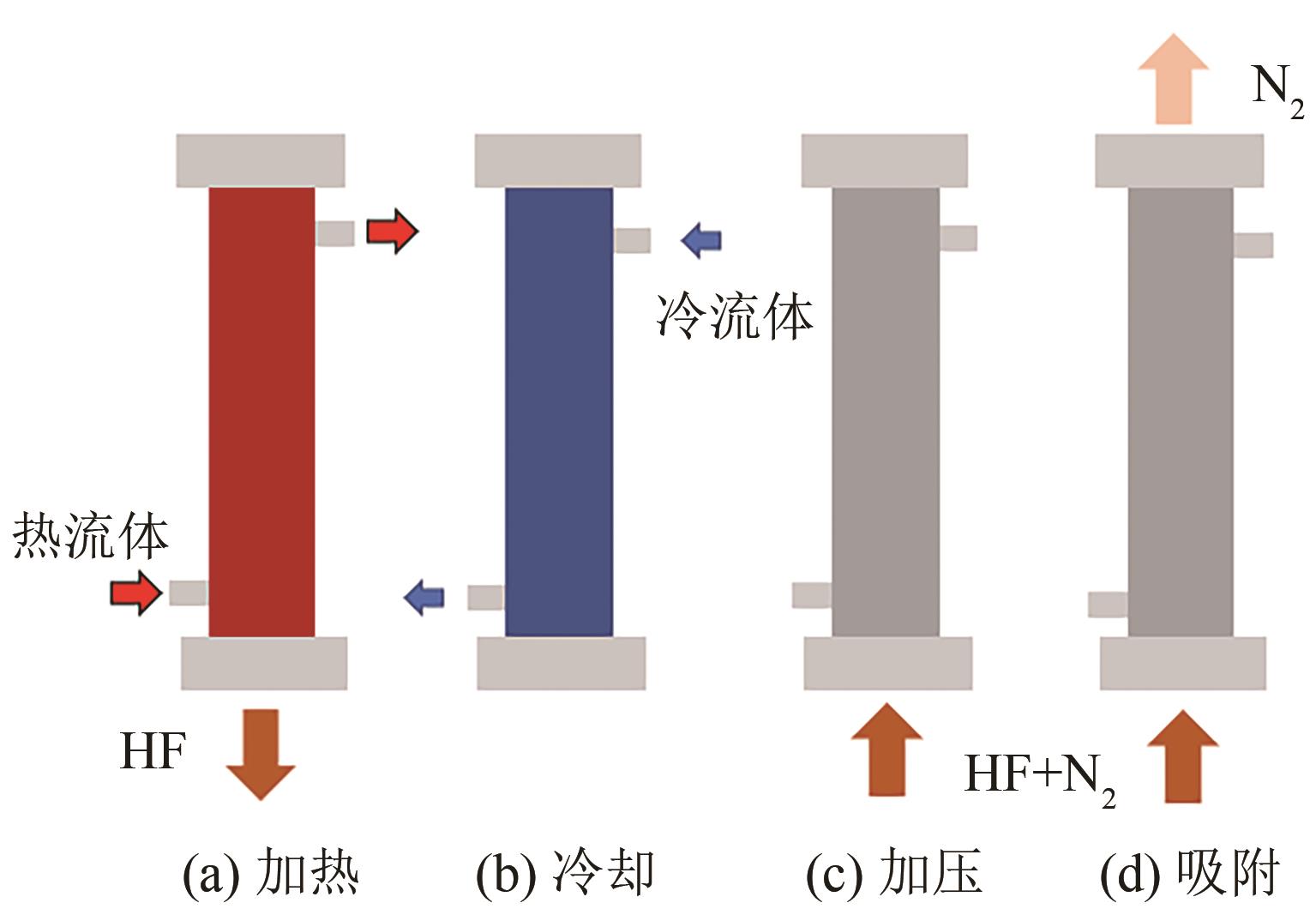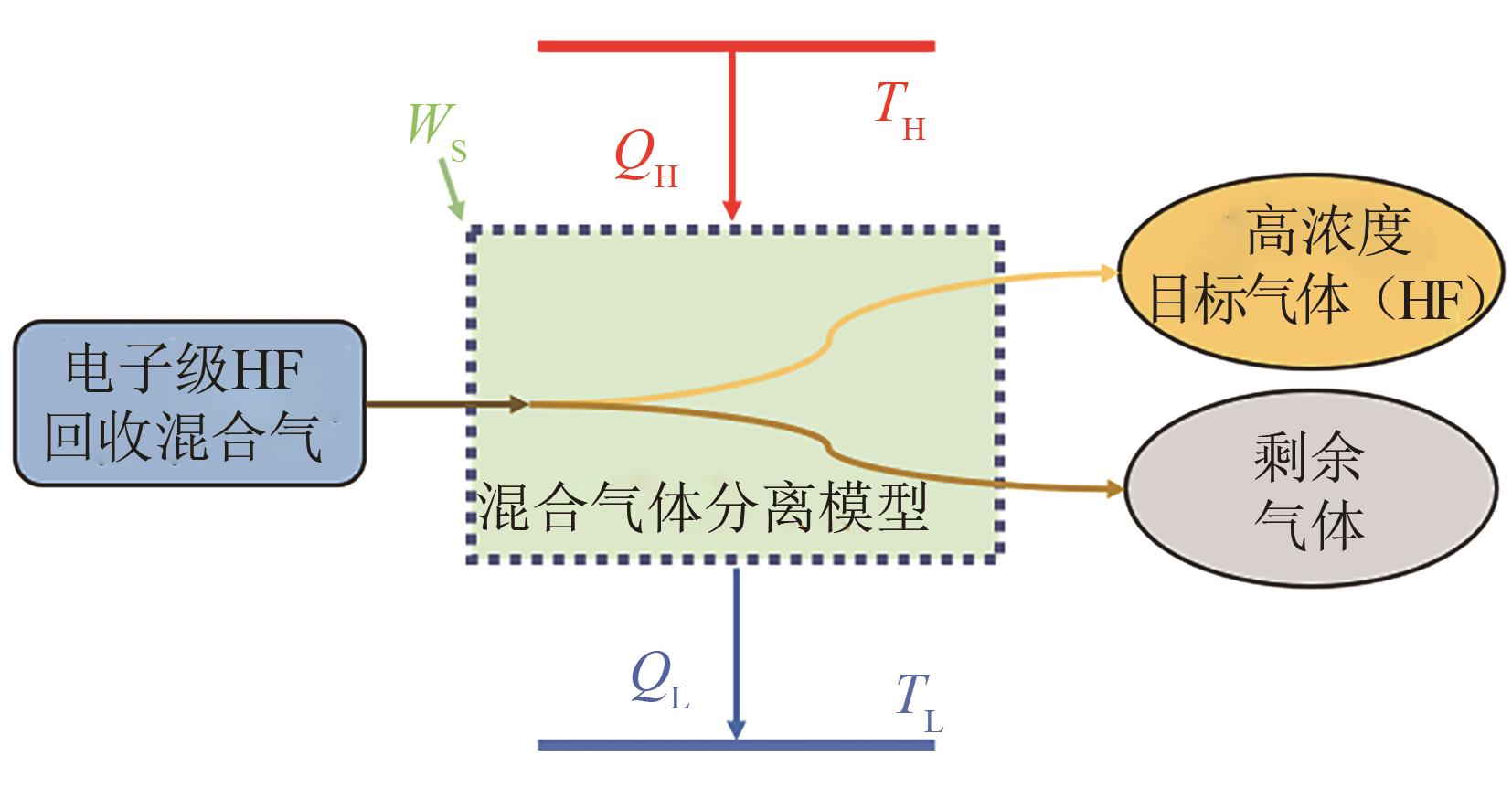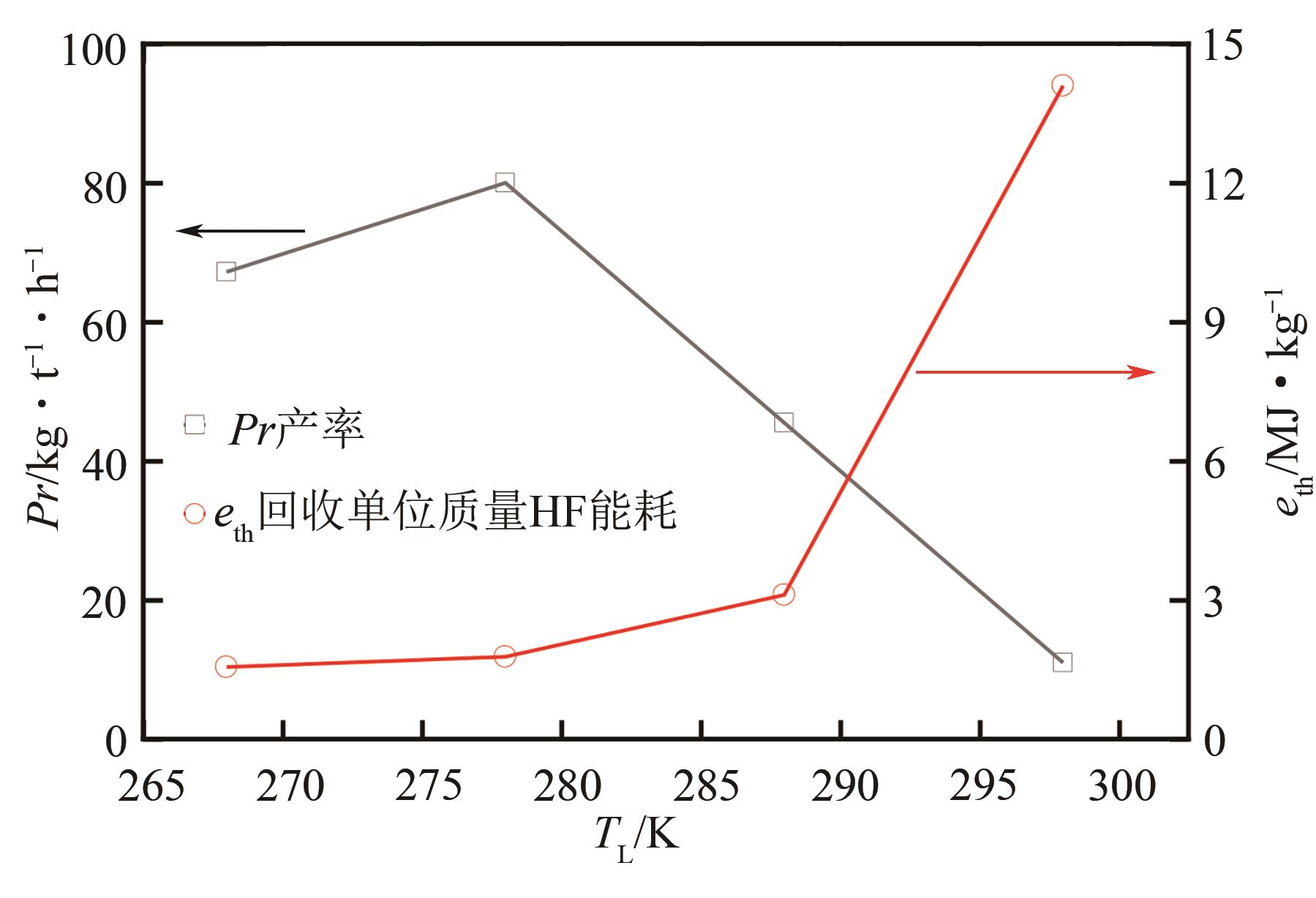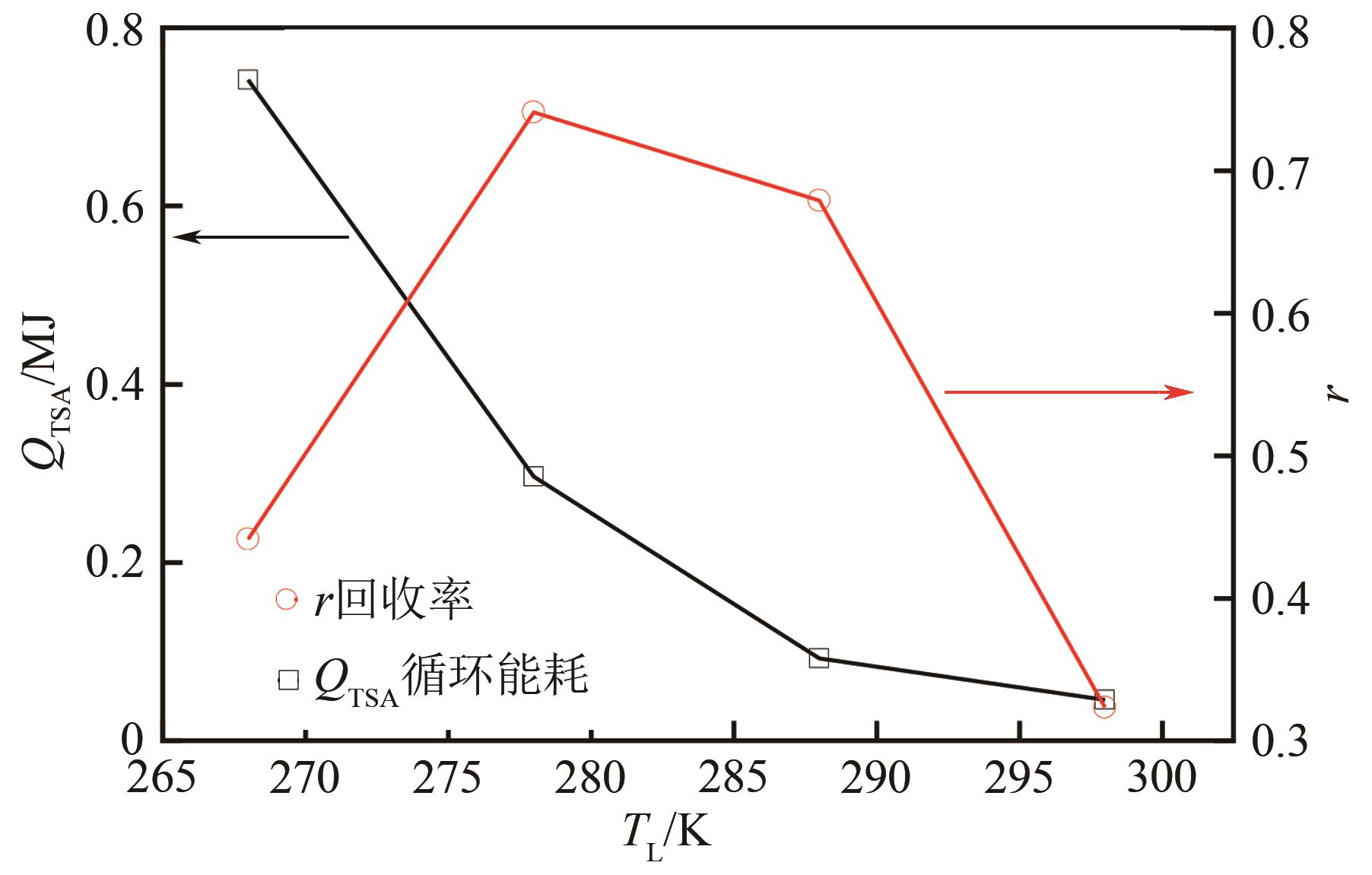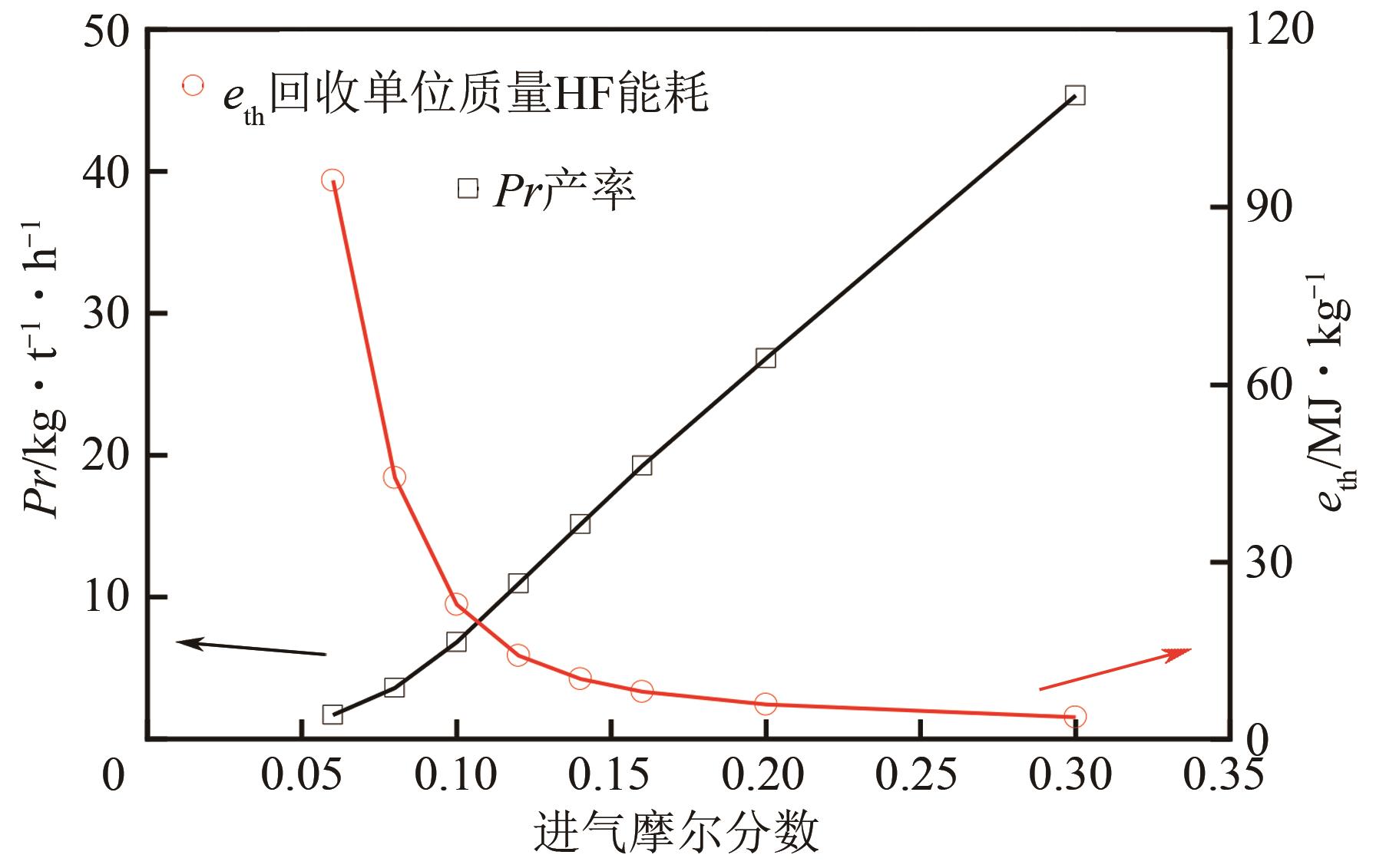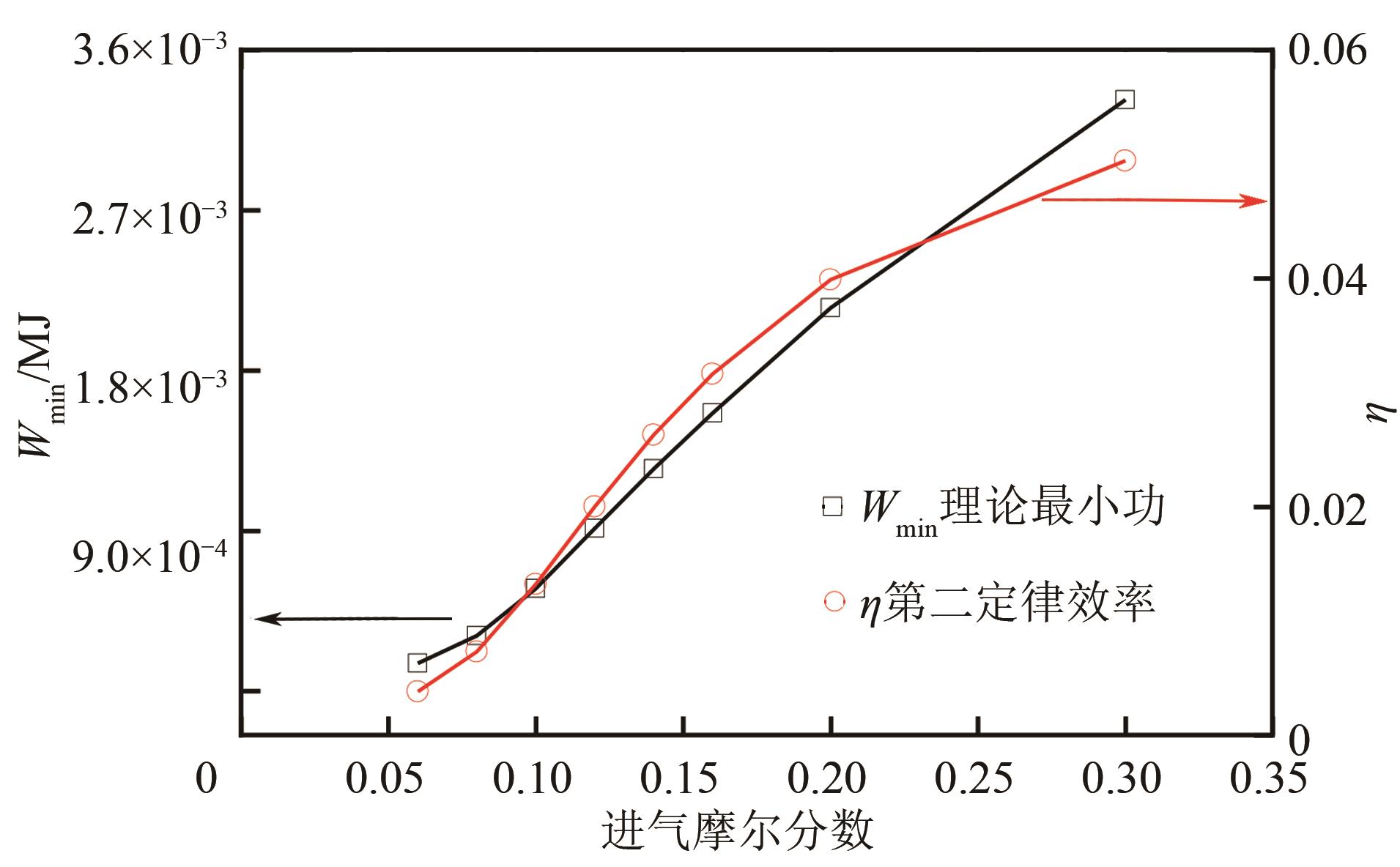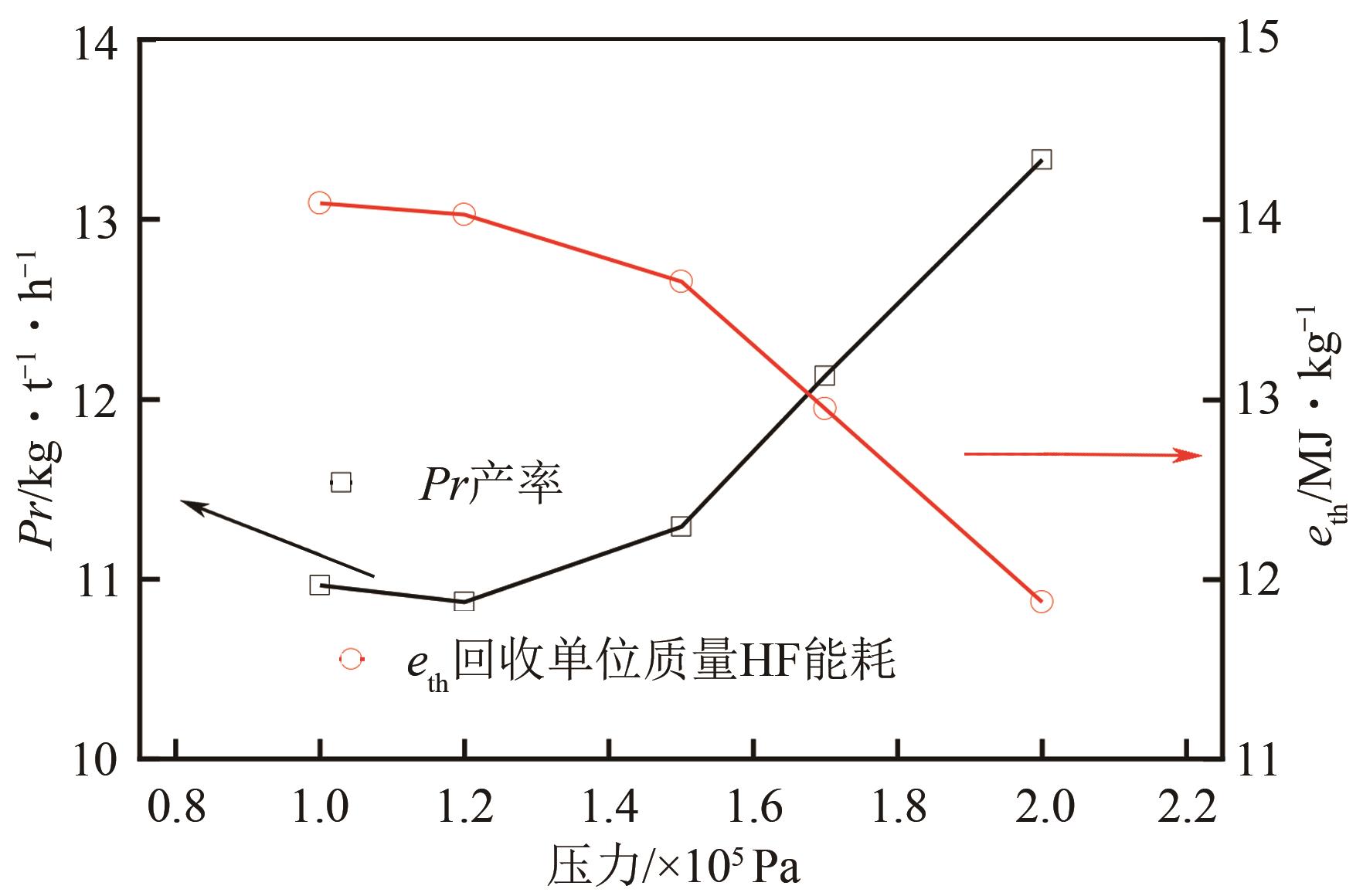化工进展 ›› 2021, Vol. 40 ›› Issue (7): 3645-3655.DOI: 10.16085/j.issn.1000-6613.2020-1721
电子级HF吸附法回收的节能降耗潜力分析
- 1.天津大学中低温热能高效利用教育部重点实验室,天津 300072
2.超低能耗碳捕集国际联合研究中心,天津 300072
-
收稿日期:2020-08-28修回日期:2021-03-01出版日期:2021-07-06发布日期:2021-07-19 -
通讯作者:赵睿恺 -
作者简介:王傢俊(1997—),男,硕士研究生,研究方向为电子级气体高效回收。E-mail:m13842557704@163.com 。 -
基金资助:国家自然科学基金面上项目(51876134);天津市技术创新引导专项“一带一路”技术合作研发及产业化项目(18YDYGHZ00090)
Analysis of energy and consumption reduction in adsorption recovery of electronic HF
WANG Jiajun1( ), DENG Shuai1,2, ZHAO Ruikai1,2(
), DENG Shuai1,2, ZHAO Ruikai1,2( ), ZHAO Li1
), ZHAO Li1
- 1.Key Laboratory of Efficient Utilization of Low and Medium Grade Energy (Tianjin University), Ministry of Education of China, Tianjin 300350, China
2.International Cooperation Research Centre of Carbon Capture in Ultra-Low Energy-Consumption, Tianjin 300072, China
-
Received:2020-08-28Revised:2021-03-01Online:2021-07-06Published:2021-07-19 -
Contact:ZHAO Ruikai
摘要:
电子级氟化氢(HF)气体的回收具有良好的经济、环境、社会效益,吸附法是最有希望实现回收的方式之一。然而能耗问题限制其进一步发展,如何对其展开节能降耗尚未见专题研究。本文通过对吸附循环能耗等指标的计算,对吸附循环的性能展开了探索性研究。采用分子模拟技术,计算获得HF的吸附平衡等温线数据;建立变温吸附循环数值模型,明确评价循环效能的指标参数;改变吸附温度、压力等运行参数,分析能耗、能效等循环指标的变化趋势,探索降低能耗提升效率的方向。计算结果表明:吸附温度由298K降低到288K,回收单位质量HF能耗由14.0912MJ/kg降低为3.1173MJ/kg,能量利用效率由0.02升高到0.0953;解吸温度由340K升高到350K,能耗降低为12.0037MJ/kg,能量利用效率升高到0.0247。可以看出,降低吸附温度对降低能耗、提升能效的作用更加明显。此外,还得到以下结论:提高进气浓度对各指标均有积极影响;提高吸附压力仅对回收率有较大影响;冷热源与操作温度的差值仅影响产率大小。
中图分类号:
引用本文
王傢俊, 邓帅, 赵睿恺, 赵力. 电子级HF吸附法回收的节能降耗潜力分析[J]. 化工进展, 2021, 40(7): 3645-3655.
WANG Jiajun, DENG Shuai, ZHAO Ruikai, ZHAO Li. Analysis of energy and consumption reduction in adsorption recovery of electronic HF[J]. Chemical Industry and Engineering Progress, 2021, 40(7): 3645-3655.
| 原子名称 | σ/? | 电荷(e-) | |
|---|---|---|---|
| Cu | 2.516 | 3.11 | 1.248 |
| O | 48.158 | 3.03 | -0.624 |
| C1 | 47.856 | 3.47 | 0.494 |
| C2 | 47.856 | 3.47 | 0.13 |
| C3 | 47.856 | 3.47 | -0.156 |
| H | 7.65 | 2.85 | 0.156 |
| F_ hf | 60.0 | 2.830 | 0.592 |
| H_ hf | 0 | 0 | 0.592 |
| HF_ w | 0 | 0 | -1.184 |
表1 Cu-BTC和HF的力场参数
| 原子名称 | σ/? | 电荷(e-) | |
|---|---|---|---|
| Cu | 2.516 | 3.11 | 1.248 |
| O | 48.158 | 3.03 | -0.624 |
| C1 | 47.856 | 3.47 | 0.494 |
| C2 | 47.856 | 3.47 | 0.13 |
| C3 | 47.856 | 3.47 | -0.156 |
| H | 7.65 | 2.85 | 0.156 |
| F_ hf | 60.0 | 2.830 | 0.592 |
| H_ hf | 0 | 0 | 0.592 |
| HF_ w | 0 | 0 | -1.184 |
| 个数 | 测试温度/K | 测试压力/Pa |
|---|---|---|
| 1 | 298 | 1000 |
| 2 | 300 | 10000 |
| 3 | 313 | 20000 |
| 4 | 330 | 50000 |
| 5 | 340 | 70000 |
| 6 | 360 | — |
| 7 | 380 | — |
| 8 | 400 | — |
| 9 | 420 | — |
表3 温度和压力的数值
| 个数 | 测试温度/K | 测试压力/Pa |
|---|---|---|
| 1 | 298 | 1000 |
| 2 | 300 | 10000 |
| 3 | 313 | 20000 |
| 4 | 330 | 50000 |
| 5 | 340 | 70000 |
| 6 | 360 | — |
| 7 | 380 | — |
| 8 | 400 | — |
| 9 | 420 | — |
| 吸附平衡等温线模型 | 模型表达式 | 模型参数表达式 | |
|---|---|---|---|
| Langmuir模型 | |||
| Toth模型 | |||
| Sips模型 | |||
表4 相关吸附平衡等温线模型
| 吸附平衡等温线模型 | 模型表达式 | 模型参数表达式 | |
|---|---|---|---|
| Langmuir模型 | |||
| Toth模型 | |||
| Sips模型 | |||
| 参数 | 数值 |
|---|---|
| 管壳内管几何尺(di)/cm | 3 |
| 管壳外管几何尺(do)/cm | 3.18 |
| 比换热面积(S)/m2·m-3 | 133.5 |
| 总换热热阻(U)/J·m-2·K-1 | 16.8 |
| 不锈钢壁面比热容(cpw)/J·m-3·K-1 | 4000000 |
| 进料速度(yF)/m·s-1 | 0.5 |
| 环境压力(pH)/Pa | 1.01×105 |
| 吸附床床长(L)/m | 1.2 |
表5 吸附腔相关的参数
| 参数 | 数值 |
|---|---|
| 管壳内管几何尺(di)/cm | 3 |
| 管壳外管几何尺(do)/cm | 3.18 |
| 比换热面积(S)/m2·m-3 | 133.5 |
| 总换热热阻(U)/J·m-2·K-1 | 16.8 |
| 不锈钢壁面比热容(cpw)/J·m-3·K-1 | 4000000 |
| 进料速度(yF)/m·s-1 | 0.5 |
| 环境压力(pH)/Pa | 1.01×105 |
| 吸附床床长(L)/m | 1.2 |
| 吸附平衡等温线模型 | R2 |
|---|---|
| Langmuir模型 | 0.8286 |
| Toth模型 | 0.7734 |
| Sips模型 | 0.9987 |
表6 298K时吸附平衡等温线的拟合结果
| 吸附平衡等温线模型 | R2 |
|---|---|
| Langmuir模型 | 0.8286 |
| Toth模型 | 0.7734 |
| Sips模型 | 0.9987 |
| 表达式参数 | 参数数值 | R2 |
|---|---|---|
| 300 | 0.9764 | |
| K0 | 7.159 | |
| Q | -10420 | |
| c0 | 1.748 | |
| α | 17.26 |
表7 Sips模型温度相关形式的拟合结果
| 表达式参数 | 参数数值 | R2 |
|---|---|---|
| 300 | 0.9764 | |
| K0 | 7.159 | |
| Q | -10420 | |
| c0 | 1.748 | |
| α | 17.26 |
| 1 | 洪海江, 应振洲, 余锋, 等. 电子级氢氟酸的纯化技术及其配套技术[J]. 有机氟工业, 2012(3): 25-29. |
| HONG Haijiang, YING Zhenzhou, YU Feng, et al. Purification technology for electronic-grade hydrofluoric acid and its associated technology[J]. Organic Forine Istry, 2012(3): 25-29. | |
| 2 | 李丹丹, 岳立平, 郑艺. 无水氟化氢的纯化工艺研究进展[J]. 化学工程师, 2017, 31(9): 36-37, 39. |
| LI Dandan, YUE Liping, ZHENG Yi. Advances in purification study of fluoride hydrogen[J]. Chemical Engineer, 2017, 31(9): 36-37, 39. | |
| 3 | 金正义, 应学来. 含氟化学品生产中过量氟化氢的吸附回收技术[J]. 有机氟工业, 2007(3): 28-29, 33. |
| JIN Zhengyi, YING Xuelai. The adsorption and recovery technology of excessive hydrogen fluoride in the production of fluorinated chemicals[J]. Organic Fluorine Industry, 2007(3): 28-29, 33. | |
| 4 | 刘飞, 邱祖军, 尹峰, 等. 电子级氢氟酸的纯化技术及其发展现状[J]. 硫磷设计与粉体工程, 2012(1): 44-48. |
| LIU Fei, QIU Zujun, YIN Feng, et al. Purification technology of electron-grade hydrofluoric acid and its development status[J]. Design and Powder Engineering of Sulfur-Phosphorus, 2012(1): 44-48. | |
| 5 | 王文利, 白志民. 中国萤石资源及产业发展现状[J]. 金属矿山, 2014(3): 1-9. |
| WANG Wenli, BAI Zhimin. Current situation of fluorite resources and industry development in China[J]. Metal Mine, 2014(3): 1-9. | |
| 6 | 李敬, 高永璋, 张浩. 中国萤石资源现状及可持续发展对策[J]. 中国矿业, 2017, 26(10): 7-14. |
| LI Jing, GAO Yongzhang, ZHANG Hao.Current situation and sustainable development countermeasures of fluorite resources in China[J]. China Mining, 2017, 26(10): 7-14. | |
| 7 | 贾磊. 日本限制对韩氟化氢出口[J]. 无机盐工业, 2019, 51(8): 94. |
| JIA L. Restriction of export of hydrogen fluoride to Korea by Japan[J]. Inorfanic Chemicals Industry, 2019, 51(8): 94. | |
| 8 | AFZAL S, RAHIMI A, EHSANI M R, et al. Experimental study of hydrogen fluoride adsorption on sodium fluoride[J]. Journal of Industrial & Engineering Chemistry, 2010, 16(1):147-151. |
| 9 | SIAHOOEI M A, BORDBARI K. Adsorption of fluoride gases in aluminum production by using of nanotechnology[M]. Berlin: Springer International Publishing, 2019: 121-136. |
| 10 | WANG C, LIU B, SUN F, et al. New challenge of microporous metal-organic frameworks for adsorption of hydrogen fluoride gas[J]. Materials Letters, 2017, 197: 175-179. |
| 11 | BAHRAMI H, SAFDARI J, MOOSAVIAN M A, et al. Adsorption of hydrogen fluoride onto activated carbon under vacuum conditions: equilibrium, kinetic and thermodynamic investigations[J]. Chemical Industry and Chemical Engineering Quarterly, 2012, 18(4): 497-508. |
| 12 | CASTILLO J M, VLUGT T J H, CALERO, et al. Understanding water adsorption in Cu-BTC Metal-Organic frameworks[J]. Journal of Physical Chemistry C, 2008, 112(41): 15934-15939. |
| 13 | PARTAY L B, JEDLOVSZKY P, HOANG P N M, et al. Free-energy profile of small solute molecules at the free surfaces of water and ice, as determined by cavity insertion widom calculations[J]. Journal of Physical Chemistry C, 2007, 111(26): 9407-9416. |
| 14 | ZHAO R, ZHAO L, DENG S, et al. A comparative study on CO2 capture performance of vacuum-pressure swing adsorption and pressure-temperature swing adsorption based on carbon pump cycle[J]. Energy, 2017, 137: 495-509. |
| 15 | DU Z, NIE X, DENG S, et al. Comparative analysis of calculation method of adsorption isosteric heat: case study of CO2 capture using MOFs[J]. Microporous and Mesoporous Materials, 2020, 298: 110053. |
| 16 | MAX, HEFTI, DORIAN, et al. Adsorption equilibrium of binary mixtures of carbon dioxide and nitrogen on zeolites ZSM-5 and 13X[J]. Microporous and Mesoporous Materials, 2015, 215: 215-288. |
| 17 | JIANG L, ROSKILLY A P, WANG R Z. Performance exploration of temperature swing adsorption technology for carbon dioxide capture[J]. Energy Conversion & Management, 2018, 165: 396-404. |
| 18 | KIM Min-Bae, MOON Jong-Ho, LEE Chang-Ha, et al. Effect of heat transfer on the transient dynamics of temperature swing adsorption process[J]. Korean Journal of Chemical Engineering, 2004, 21(3): 73-711. |
| 19 | JOSS L, GAZZANI M, HEFTI M, et al. Temperature swing adsorption for the recovery of the heavy component: an equilibrium-based shortcut model[J]. Industrial & Engineering Chemistry Research, 2015, 54(11): 3027-3038. |
| 20 | ZHAO R, DENG S, LIU Y, et al. Carbon pump: fundamental theory and applications[J]. Energy, 2017, 119:1131-1143. |
| 21 | KLOUTSE F A, ZACHARIA R, COSSEMENT D, et al. Specific heat capacities of MOF-5, Cu-BTC, Fe-BTC, MOF-177 and MIL-53 (Al) over wide temperature ranges: measurements and application of empirical group contribution method[J]. Microporous and Mesoporous Materials, 2015, 217: 1-5. |
| [1] | 李梦圆, 郭凡, 李群生. 聚乙烯醇生产中回收工段第三、第四精馏塔的模拟与优化[J]. 化工进展, 2023, 42(S1): 113-123. |
| [2] | 马伊, 曹世伟, 王家骏, 林立群, 邢延, 曹腾良, 卢峰, 赵振伦, 张志军. 低共熔溶剂回收废旧锂离子电池正极材料的研究进展[J]. 化工进展, 2023, 42(S1): 219-232. |
| [3] | 崔守成, 徐洪波, 彭楠. 两种MOFs材料用于O2/He吸附分离的模拟分析[J]. 化工进展, 2023, 42(S1): 382-390. |
| [4] | 张杰, 王放放, 夏忠林, 赵光金, 马双忱. “双碳”目标下SF6排放现状、减排手段分析及未来展望[J]. 化工进展, 2023, 42(S1): 447-460. |
| [5] | 钱思甜, 彭文俊, 张先明. PET熔融缩聚与溶液解聚形成环状低聚物的对比分析[J]. 化工进展, 2023, 42(9): 4808-4816. |
| [6] | 常印龙, 周启民, 王青月, 王文俊, 李伯耿, 刘平伟. 废弃聚烯烃的高值化学回收研究进展[J]. 化工进展, 2023, 42(8): 3965-3978. |
| [7] | 王报英, 王皝莹, 闫军营, 汪耀明, 徐铜文. 聚合物包覆膜在金属分离回收中的研究进展[J]. 化工进展, 2023, 42(8): 3990-4004. |
| [8] | 吕杰, 黄冲, 冯自平, 胡亚飞, 宋文吉. 基于余热回收的燃气热泵性能及控制系统[J]. 化工进展, 2023, 42(8): 4182-4192. |
| [9] | 胡亚飞, 冯自平, 田佳垚, 宋文吉. 空气源燃气热泵系统多制热运行模式下余热回收特性[J]. 化工进展, 2023, 42(8): 4204-4211. |
| [10] | 欧阳素芳, 周道伟, 黄伟, 贾凤. 新型耐迁移橡胶防老剂的研究进展[J]. 化工进展, 2023, 42(7): 3708-3719. |
| [11] | 赵毅, 杨臻, 张新为, 王刚, 杨旋. 不同裂缝损伤和愈合温度条件下沥青自愈合行为的分子模拟[J]. 化工进展, 2023, 42(6): 3147-3156. |
| [12] | 杨发容, 顾丽莉, 刘洋, 李伟雪, 蔡洁云, 王惠平. 计算机模拟辅助特丁津分子印迹聚合物的制备及应用[J]. 化工进展, 2023, 42(6): 3157-3166. |
| [13] | 侯殿保, 贺茂勇, 陈育刚, 杨海云, 李海民. 资源优化配置与循环经济在钾资源开发利用中的应用[J]. 化工进展, 2023, 42(6): 3197-3208. |
| [14] | 李瑞东, 黄辉, 同国虎, 王跃社. 原油精馏塔中铵盐吸湿特性及其腐蚀行为[J]. 化工进展, 2023, 42(6): 2809-2818. |
| [15] | 李华华, 李逸航, 金北辰, 李隆昕, 成少安. 厌氧氨氧化-生物电化学耦合废水处理系统的研究进展[J]. 化工进展, 2023, 42(5): 2678-2690. |
| 阅读次数 | ||||||
|
全文 |
|
|||||
|
摘要 |
|
|||||


